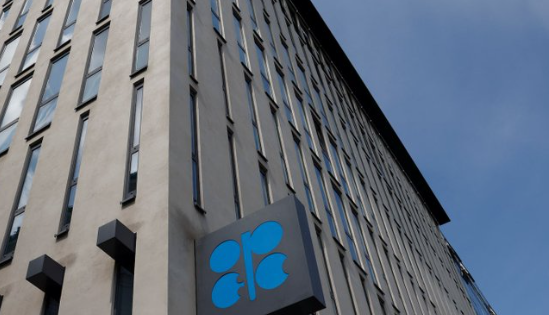Giovanni Staunovo, Analyst at UBS: “The biggest risk for the oil market is probably a further drop in Libyan oil production due to political tensions in the country”BTimes Online
Ole Hansen, Head of Commodity Strategy at Saxo Bank: “The halt in Libyan oil production raises concerns about prolonged disruptions, adding further pressure on global oil supplies”BTimes Online
Oil prices stabilized on Monday after experiencing losses at the end of last week due to expectations of increased OPEC+ production starting in October and signs of weak demand from China and the United States. The stabilization came as Libyan oil exports remained halted, affecting the overall market dynamics.
As of 1419 GMT, Brent crude futures were slightly down by 6 cents, or 0.08%, trading at $76.87 per barrel. Meanwhile, U.S. West Texas Intermediate (WTI) crude saw a slight uptick, rising by 8 cents, or 0.11%, to $73.63 per barrel. These movements occurred on a day when the U.S. market was closed for a public holiday.
#OOTT #WTI #Oil steadies as halted #Libyan exports balance expected #OPEC+ supply boost https://t.co/2lAAyjE11k
— WTI Trading Group- 🇺🇸 US Crude Oil Trader🛢️🌎 (@DB_WTI) September 2, 2024
Last Friday, oil prices took a hit, with Brent losing 1.4% and WTI dropping 3.1%. The decline was driven by expectations that OPEC+ would increase production and by ongoing concerns over reduced demand in major markets.
On Monday, oil exports from key Libyan ports remained halted, and production was reduced across the country. This was due to a continued standoff between rival political factions over control of the central bank and oil revenues. Libya’s Arabian Gulf Oil Company did resume some production, specifically around 120,000 barrels per day (bpd) to supply a power plant at the port of Hariga, indicating some level of operational activity amid the disruptions.
Kelvin Wong, Senior Market Analyst at OANDA: “Geopolitical risk factors in the Middle East are again at the forefront of influencing the oil market. Any escalation could significantly impact global oil supplies”BTimes Online
Bjarne Schieldrop, chief commodity analyst at SEB, noted that the disturbances in Libya’s oil production might allow for increased supply from OPEC+. However, he suggested that such fluctuations have become routine over recent years, likely resulting in only brief outages. Signs indicating a possible restart of Libyan oil production have already emerged, which could stabilize supply further.
OPEC+ is set to proceed with planned production increases from October, as confirmed by six sources within the producer group. In October, eight OPEC+ members are expected to raise their output by 180,000 bpd, as part of a strategy to gradually reverse some of their recent supply cuts, while maintaining other reductions until the end of 2025.
Despite the current disruptions in Libya and ongoing conflicts in the Middle East, both Brent and WTI have recorded losses for two consecutive months. Concerns about dwindling demand in the U.S. and China have overshadowed these supply risks.
China’s demand outlook grew more pessimistic following an official survey released on Saturday showing that manufacturing activity fell to a six-month low in August. The survey also indicated a decline in factory gate prices and challenges for factory owners in securing orders. “The softer-than-expected China PMI released over the weekend heightens concerns that the Chinese economy will miss growth targets,” stated Tony Sycamore, a market analyst at IG.
Libyan Oil Exports Stalled Amid Domestic Energy Needs https://t.co/a5WZJ5GRTE
— Devdiscourse (@Dev_Discourse) September 2, 2024
In the U.S., oil consumption in June fell to seasonal lows not seen since the COVID-19 pandemic in 2020, according to data released by the Energy Information Administration on Friday. This drop in consumption further underscores the challenges facing the oil market as it grapples with shifting demand dynamics in major economies.
Key Points:
- Oil Price Stability: Oil prices steadied on Monday following previous losses, influenced by halted Libyan oil exports and anticipated increases in OPEC+ production starting in October.
- Libyan Export Halt: Oil exports from major Libyan ports remained halted due to a political standoff, although some production resumed to supply a power plant.
- OPEC+ Output Plans: OPEC+ is set to increase oil output by 180,000 barrels per day in October as part of a strategy to gradually reverse earlier supply cuts, with some cuts extended until 2025.
- Demand Concerns: Both Brent and WTI have faced consecutive monthly losses due to reduced demand in the U.S. and China, despite supply disruptions in Libya and the Middle East.
- Weak Economic Indicators: Pessimism about Chinese demand growth increased after weak manufacturing data, while U.S. oil consumption in June hit pandemic-era lows, signaling potential challenges for the oil market.
Fallon Jacobson – Reprinted with permission of Whatfinger News

